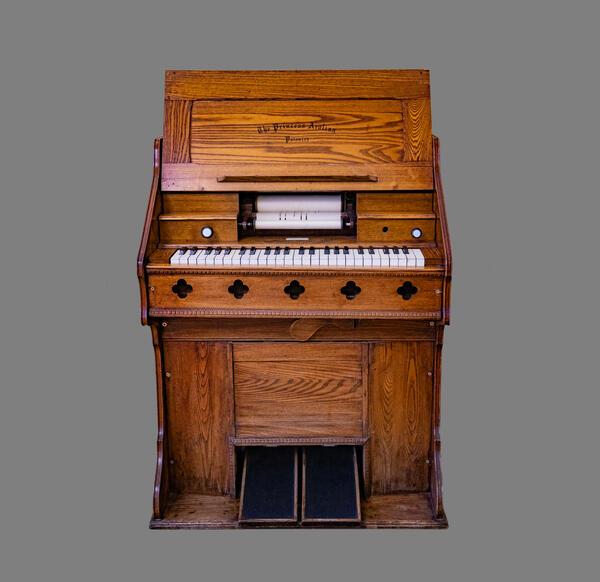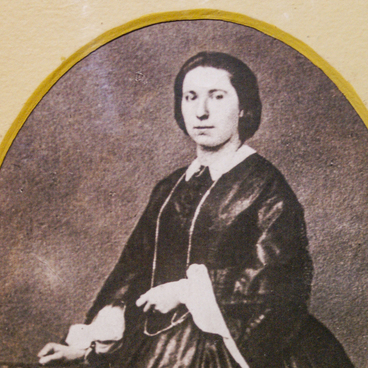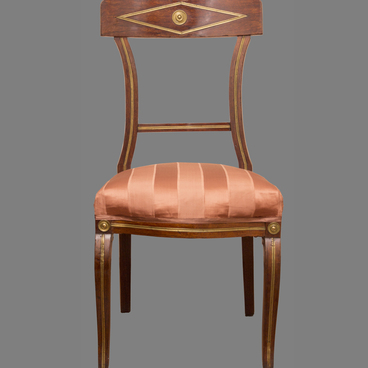The physharmonica is a musical instrument of the accordion family with a piano keyboard and bellows which supply air. It imitates the sound of a symphony orchestra. This instrument was often called an orchestrina. The first physharmonica was made in 1818 in Vienna by a musical instrument builder Anton Haeckl. Later, it was improved by a Parisian master Alexandre-François Debain who designed its modern look.
The physharmonica’s body is brown; it has two wide pedals located on its lower part. They inflate the bellows, which drive a shaft with a paper perforated tape. The physharmonica’s keyboard has a range of four octaves. The upper part of the instrument closes with a hinged lid, the inner part of which serves as a music stand. The side of the pump organ is decorated with carvings in the form of a floral ornament. Under the keyboard is a wooden pad with five holes.
For many years, it was believed that it is the orchestrina of the Tchaikovsky family, which the composer called his ‘first musical educator’. However, experts could not find any documentary evidence of this theory. It was only known that this physharmonica was purchased in 1960 from Illarion Torgovtsev, a doctor at the Yumatov sanatorium near Ufa.
One of the inscriptions on the musical instrument states: ‘Patented and Manufactured in the United States of America’. Thanks to colleagues from the USA, researchers were able to establish that the museum houses a self-playing physharmonica of the model ‘Princess’ made by a New York firm ‘Aeolian Company’. This instrument was produced in the USA since early 1897.
Julius Zimmerman, whose name is indicated on one of the instrument plates, was the official representative of the Leipzig branch of the musical-instrument making factory, which was opened in 1886. Zimmerman himself was born only in 1851, so he could not have brought this instrument to the Tchaikovsky House in Votkinsk in the 1840s.
The physharmonica’s body is brown; it has two wide pedals located on its lower part. They inflate the bellows, which drive a shaft with a paper perforated tape. The physharmonica’s keyboard has a range of four octaves. The upper part of the instrument closes with a hinged lid, the inner part of which serves as a music stand. The side of the pump organ is decorated with carvings in the form of a floral ornament. Under the keyboard is a wooden pad with five holes.
For many years, it was believed that it is the orchestrina of the Tchaikovsky family, which the composer called his ‘first musical educator’. However, experts could not find any documentary evidence of this theory. It was only known that this physharmonica was purchased in 1960 from Illarion Torgovtsev, a doctor at the Yumatov sanatorium near Ufa.
One of the inscriptions on the musical instrument states: ‘Patented and Manufactured in the United States of America’. Thanks to colleagues from the USA, researchers were able to establish that the museum houses a self-playing physharmonica of the model ‘Princess’ made by a New York firm ‘Aeolian Company’. This instrument was produced in the USA since early 1897.
Julius Zimmerman, whose name is indicated on one of the instrument plates, was the official representative of the Leipzig branch of the musical-instrument making factory, which was opened in 1886. Zimmerman himself was born only in 1851, so he could not have brought this instrument to the Tchaikovsky House in Votkinsk in the 1840s.



